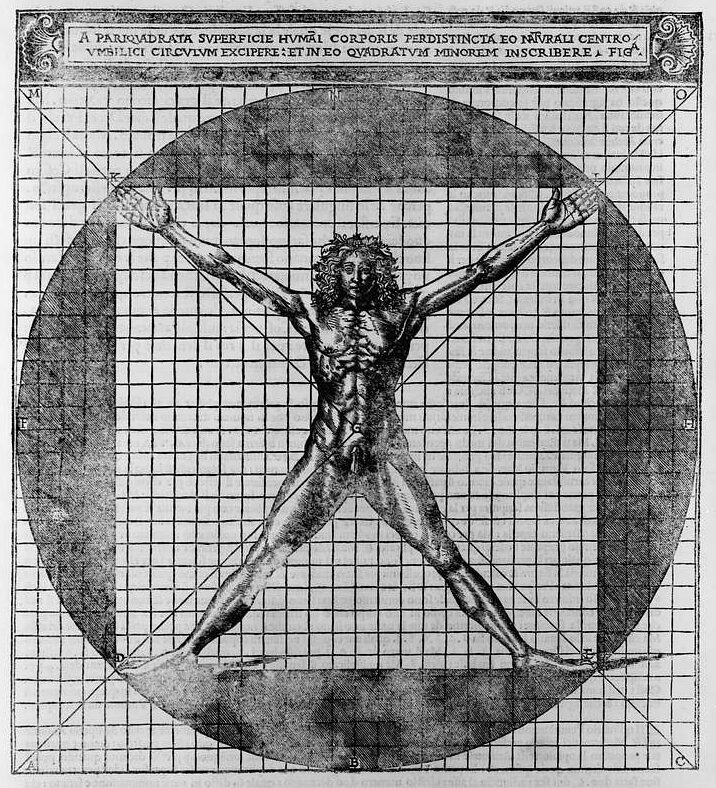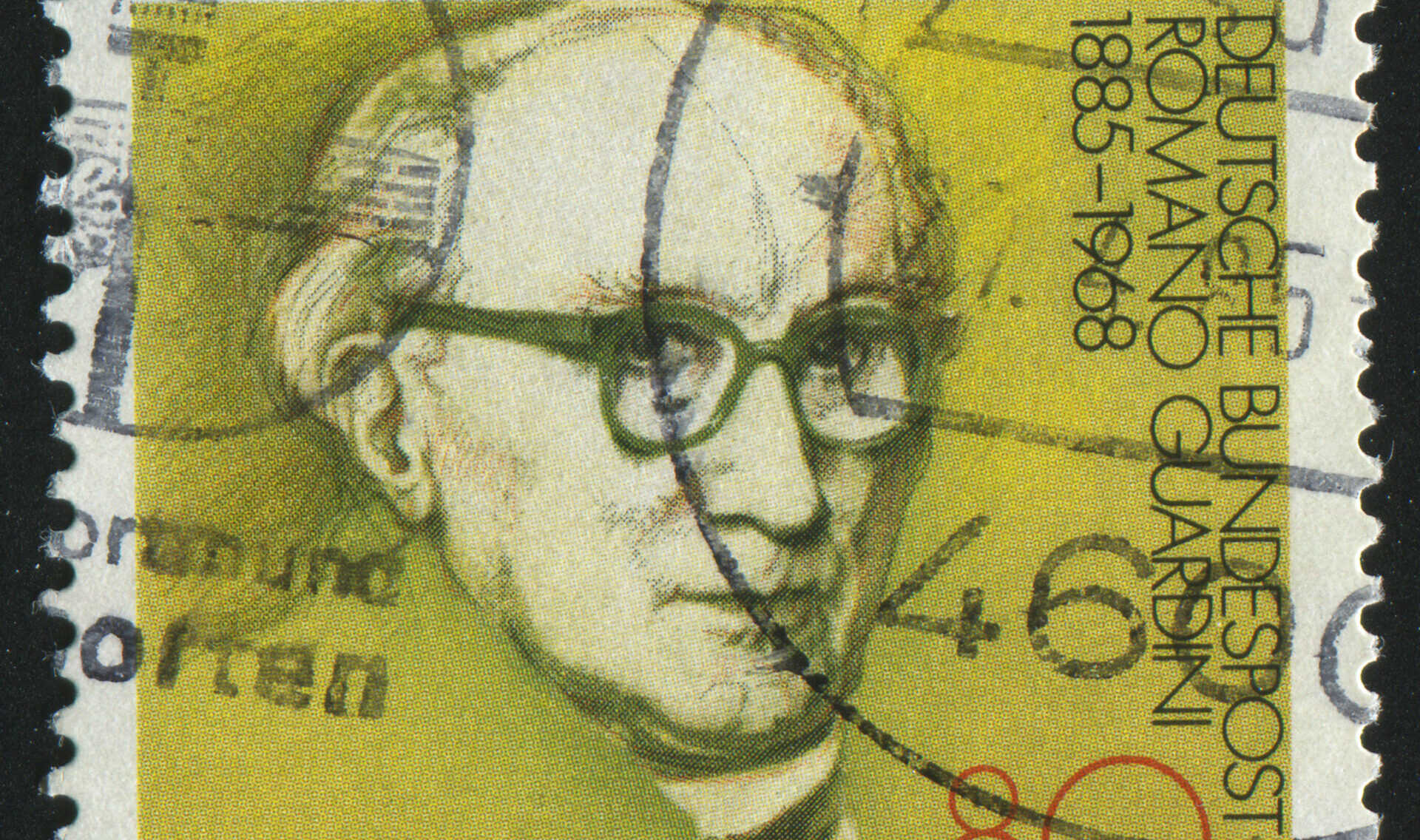“Our age is not just an external path that we tread; it is ourselves. Our age is our own blood, our own soul. We relate to it as to ourselves. We love it and hate it at one and the same time.”1 Man struggles to live in the present. He either hides in a glorious past or projects himself into a fulfilled future. Our age is difficult to love but it is our age, and, as Guardini suggests, it is ourselves. We are cultured creatures; we do not live in a vacuum. Hence, there is a sense of responsibility, and this is key for Romano Guardini’s evaluation of the modern world, and it should shape our engagement with it. It means that we need to be personally invested in facing the present difficulties. Here I am specifically referring to the technological paradigm, our Weltanschauung, and the immense difficulties of worshiping in the age of technology. The difficulty arises because it is not simply the context we live in but it is “our own soul.”
We are cultured creatures; we do not live in a vacuum.
Over 60 years ago the Canadian political philosopher George P. Grant was ringing the alarm bells about the danger of technology. He went so far as to say that it is changing our very ontology (our very being), and the result is that eventually we will no longer be able to discern intimations of the Good. Is this possible? Is modern man incapable of divine receptivity and thereby incapable of worship? Certainly those of us who worship regularly in the Mass respond with a “no.” The fact that we continue to go to Mass evidences this “no.” Thus, perhaps the more appropriate question is: Is our liturgical capacity severely limited because of the age we live in? If the answer is in the affirmative, then we must ask: in what ways are we limited, and how should we respond? Furthermore, is it possible that our liturgical capacity could continue to decrease until it is lost altogether?

Image Source: AB/Ignatius Press
In his famous 1964 letter to the Mainz liturgical conference,2 Guardini highlighted the problem of the liturgical act. He claimed that the typical man of the 19th century was not capable of it. “Religious conduct was to him an individual inward matter which in the ‘liturgy’ took on the character of an official, public ceremonial. But the sense of the liturgical action was thereby lost. The faithful did not perform a proper liturgical act at all, it was simply a private and inward act, surrounded by ceremonial and not infrequently accompanied by a feeling that the ceremonial was really a disturbing factor.” The liturgical act will be incomprehensible to those “whose inclinations are individualistic, rationalistic, and, above all, attached to traditions.” He rhetorically asks, “Would it not be better to admit that man in this industrial and scientific age, with its new sociological structure, is no longer capable of a liturgical act?” He concludes on a positive note, highlighting that the rise of the liturgical movement coincided with a new awareness of the Church and of an understanding of the human person whose body and spirit form an integrated whole. It is this confluence that I want to focus on and that will provide a response to the aforementioned questions.
Is our liturgical capacity severely limited because of the age we live in?
Before moving on I need to clear the ground. The liturgy is a fundamental act that not only forms reality but reveals reality. Getting the words, actions, smells, and bells of liturgy correct is important but not enough. The liturgy is not a magical formula. We must, as Guardini and Joseph Ratzinger maintain, understand the spirit of the liturgy—a difficult task. The pendulum too often swings between radical traditionalism and ordo libertarianism: both of which fail to understand the spirit of the liturgy. Louis Bouyer refers to these extreme positions in terms of christological heresies: Monophysitism and Nestorianism. The former sees the liturgy and the sacraments as sui generis, as absolutely set apart from the world, and “a fierce opposition is maintained to everything that could emphasize what the sacred rites have in common with simple human actions.”3 The latter sees the liturgy as decorative human invention, as absolutely worldly and profane. Both fail to see aright because both lack a proper understanding of the Incarnation or, more broadly speaking, a sacramental vision, and therefore they lack an awareness of the Church and of the integrated person—an ecclesial anthropology goes hand in hand with the liturgical act.
Receptive Gift
In apprehending who we are—ecclesial persons—not only will we better understand the spirit of the liturgy, but we will also better comprehend the world and, along with the world, our own liturgical capabilities. It is not mere coincidence but providence that the Second Vatican Council began with the liturgy (Sacrosanctum Concilium) and also produced what is probably the most often utilized quotation in regard to theological anthropology: “The truth is that only in the mystery of the incarnate Word does the mystery of man take on light. For Adam, the first man, was a figure of Him Who was to come, namely Christ the Lord. Christ, the final Adam, by the revelation of the mystery of the Father and His love, fully reveals man to man himself and makes his supreme calling clear” (Gaudium et Spes, 22). Providence continued with St. John Paul II’s profound Wednesday addresses that were eventually compiled as Man and Woman He Created Them: A Theology of the Body. In this compilation, working out the insights of Gaudiem et Spes 22, he writes, “Every creature bears within itself the sign of the original and fundamental gift. Yet, at the same time, the concept of ‘giving’ cannot refer to nothing. It indicates the one who gives and the one who receives the gift, as well as the relation established between them. Now, this relation emerges in the creation account at the very moment of the creation of man.”4

Every creature is a gift. We do not simply give ourselves to others—laying down our lives—but we are gifts. The verb (action) and noun (being) go hand in hand. This is why there is peace, joy, and an experience of fulfilment when we give ourselves away. By gifting ourselves we are being true to our selves. The other side of this ontological reality (we are gifts) is receptivity. We are creatures who receive. God cannot gift something if there is not someone to receive. In trinitarian theology we can say that God is gift because the Father gifts himself to the Son, and the Son, through the Spirit, gifts himself back to the Father. Writing about the Apostles preparing the upper room for the last supper, Pope Francis asserts that “every gift, to be gift, must have someone disposed to receive it.”5 Here we see the connection between receptivity and rite, but it is important that we add to what Pope Francis set out. Namely, it is not someone in the singular that must receive it. It was not St. Peter alone but he and the other eleven Apostles who received the Eucharistic foretaste of what was to come. As Ratzinger writes, “it is impossible to start a conversation with Christ alone, cutting out the Church. A christological form of prayer which excludes the Church also excludes the Spirit and the human being himself.”6 The human being images God in his relationality, and that is why, in part, excluding the Church is also the exclusion of the human person. We are beings in relation. Ratzinger uses the following compound German words to highlight this: “Sein-mit-anderen” (Being-with-others) and “Sein-für-die-Anderen” (Being-for-the-others). As relational creatures, both our receiving and our offering of thanksgiving (Eucharist) occurs in the ecclesial “we.”
If a gift requires reception, then God would not gift us with himself in the Eucharistic celebration unless we are capable of receiving him. Man is a gift, is a receiver, is thereby one who can worship. Alexander Schmemann potently notes, “‘Homo sapiens’, ‘homo faber’ [man the creator]… yes, but, first of all, ‘homo adorans.’ The first, the basic definition of man is that he is the priest.”7 At the core of his being, man is homo adorans. Worship is not an accidental feature that man adds to his life; rather, worship is at the very core of his human identity. With this in mind, we can say that it is impossible to completely lose the ability to enter into the liturgical act.
On one hand, modern man denies the importance of the body and seeks to overcome it. On the other hand, the modern person is a materialist.
Nevertheless, thinking anthropologically, it remains a possibility that to some degree our capability to worship can be reduced. Albeit, we are never beyond redemption and worship. In his theology of the body, John Paul II highlights the interiority of the human person, what he calls original solitude. That is, man is more (not less) than his exteriority; he is not moved but moves. As a self-determining creature we make choices and like our primordial parents we constantly stand before the tree of the knowledge of good and evil. The choices we self-determine make us more fully ourselves or less ourselves. In Schmemann’s terminology, we fulfill our royal priesthood, or we move toward idolatry and become more like what we worship than ourselves (and let us not forget that each one of us is meant to become an alter Christus). Is modern man more at risk of reducing himself than he was in previous epochs? Are we less capable of the liturgical act than we were at other times in history?
Technocrats and the Liturgical Act
The technological age clearly places obstacles in our way. Yet, returning to the Guardini quotation that I began with, “our age is our own blood,” and thus every age is broken; every age is wrought with impediments, for every man is broken. Therefore, the better question is, what is modern man’s (or technological man’s) particular brokenness? To paint with broad strokes, modern man is divided in two. Let me highlight two aspects of this.
Modern man is a divided creature bifurcated by gnosticism and materialism. On one hand, he denies the importance of the body and seeks to overcome it. Three examples immediately come to mind: virtual reality, birth control, and transgenderism (gender and sex are social constructs). On the other hand, the modern person is a materialist. Scientism, committing a self-refuting logical fallacy, explains away all non-material reality and reduces everything to biology.
In a strange way there is something hopeful about the broken division of our age.
The second division is between individualism and mass culture. On one hand, the Western world is deeply informed by American individualism. Individual choice is elevated as the ultimate right (e.g., pro-choice). On the other hand, the unique genius of the Romantic era no longer exists. We live in the midst of Critical Race Theory in which there is no unique “I.” There is only an aggregate: we are only our race, our culture, our class.
In a strange way there is something hopeful about the broken division of our age. What thoughtful person does not feel the inner tug of war? Who does not long to be integrated? The divided person is unhappy and cynical. While divided between gnosticism and materialism one cannot fully grasp the liturgical act, but one can feel its pull, its movement toward integration. John Paul II’s theology of the body, in a way, is the new evangelization that leads into the liturgical act. Here the exterior and interior of the human person is integrated and leads one into the otherness of relationship, what he refers to as the spousal meaning of the body. As the Australian theologian Adam Cooper puts it, “it means that the fact of sexual difference and affective reciprocity stands as a created sign pointing to the even greater fact that we are created for communion with God.”8 Modern man is primed, so to speak, for the sacramental integration of the liturgy.
Modern man is primed, so to speak, for the sacramental integration of the liturgy.
Individualism is a heresy; like all heresies it is a truth gone too far. Each human person is worthy of dignity and is not an anonymous “they.” Each person matters. Yet, a person is one in relation. I am a husband, a father, a brother, a friend, a mentor, a teacher, and so forth. I am uniquely me because of my relationships with others, and I know my uniqueness only by being in relation. The modern person may not understand this, but he feels the tension. He wants meaningful relationships but does not want to be absorbed and lost. At the same time, mass culture consumes him and he wants to be part of something bigger than himself; yet, subconsciously he feels the loss of self. Again, does this not open modern man to the Church and her liturgy, to that which is the very manifestation of redemption: the coming together of God and man, and men with each other—a coming together that elevates each person?
Threads of History
History does not lie outside of God’s purview—just the opposite. History is the story of God’s love for the world. We are not redeemed from time but through time. This theme runs throughout Ratzinger’s/Benedict XVI’s work and was brought home to me again in reading Guardini’s End of the Modern World. Our age, like every age, reflects our human brokenness, but we are not meant to accept this brokenness, lie down, and play dead. We are not dogs but self-determining persons whose identity as royal priests cannot be erased. Guardini writes that, in terms of our modern era, man “is to take responsibility. In appropriate activity we now have to penetrate the new thing so as to gain mastery over it. We have to become lords of the unleashed forces and shape them into a new order that relates to humanity.”9 This emphasis on responsibility is key to the questions raised in this essay. Priests, religious, and laity alike must, each in our own way, take responsibility not just for ourselves but for our age, and enter into the fray of history, reweaving the divided threads of modern man, drawing him into an ecclesial existence and into the liturgical act.
Andrew TJ Kaethler, PhD, is Academic Dean and Associate Professor of Theology at Catholic Pacific College, Langley, British Columbia, Canada. Kaethler specializes in theological anthropology, particularly in the work of Joseph Ratzinger and Alexander Schmemann. He has published in various journals including Modern Theology, New Blackfriars, Pontificia Academia Theologica, and Logos: A Journal of Catholic Thought and Culture. With Sotiris Mitralexis he has co-edited two edited volumes; the latest is titled Mapping the Una Sancta: Eastern and Western Ecclesiology in the Twenty-First Century (2023). His most recent monograph The Eschatological Person: Alexander Schmemann and Joseph Ratzinger in Dialogue was published with Cascade Books in 2022. Kaethler lives in Langley with his wife and six kids.
Footnotes
- Romano Guardini, Letters From Lake Como: Explorations in Technology and the Human Race, trans. Geoffrey W. Bromiley (Grand Rapids: William B. Eerdmans, 1994), 81.
- Romano Guardini, 1964 Letter to the Mainz liturgical conference: https://www.ccwatershed.org/2013/09/05/1964-letter-romano-guardini/
- Louis Bouyer, Rite and Man: Natural Sacredness and Christian Liturgy (Notre Dame, Indiana: University of Notre Dame Press, 1963), 6.
- John Paul II, Man and Woman: He Created Them: A Theology of the Body, trans. Michael Waldstein (Boston, MA: Pauline Books & Media, 2006), 180.
- Francis, Desiderio Desideravi. https://www.vatican.va/content/francesco/en/apost_letters/documents/20220629-lettera-ap-desiderio-desideravi.html, 3.
- Joseph Ratzinger, The Feast of Faith: Approaches to a Theology of the Liturgy, trans. Graham Harrison (San Francisco: Ignatius Press, 1986), 30.
- Alexander Schmemann, For the Life of the World: Sacraments and Orthodoxy (Crestwood, NY: St Vladimir’s Seminary Press, 1973), 15.
- Adam Cooper, Holy Eros: A Liturgical Theology of the Body (Kettering, OH: Angelico Press, 2014), 2.
- Romano Guardini, The End of the Modern World (Wilmington, Del: ISI Books, 1998), 82.


